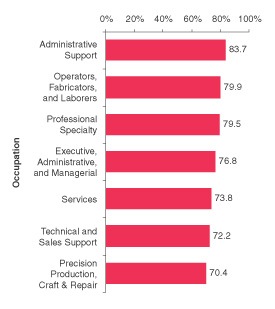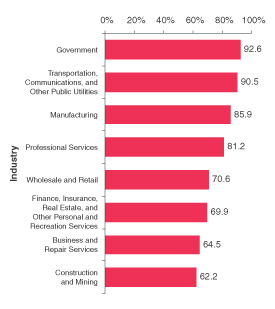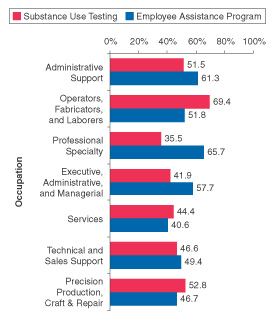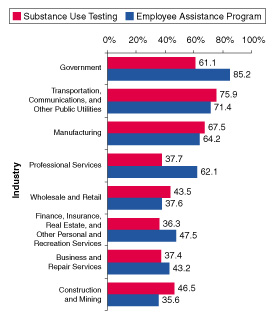The National Household Survey on Drug Abuse (NHSDA) is an annual survey sponsored by the Substance Abuse and Mental Health Services Administration (SAMHSA). The 2000 data are based on information obtained from nearly 72,000 persons aged 12 or older, including 24,215 adults aged 18 to 49 employed full–time. The survey collects data by administering questionnaires to a representative sample of the population through face–to–face interviews at their place of residence.
The NHSDA Report is prepared by the
Office
of Applied Studies (OAS), SAMHSA, and by RTI in Research Triangle Park, North Carolina.
Information and data for this issue are based on the following publication and statistics:
Substance Abuse and Mental Health Services Administration. (2001). Summary of findings from the 2000 National Household Survey on Drug Abuse (NHSDA Series: H–13, DHHS Publication No. SMA 01–3549). Rockville, MD: Author.
Also available on–line: www.oas.samhsa.gov.
Additional tables available upon request.





